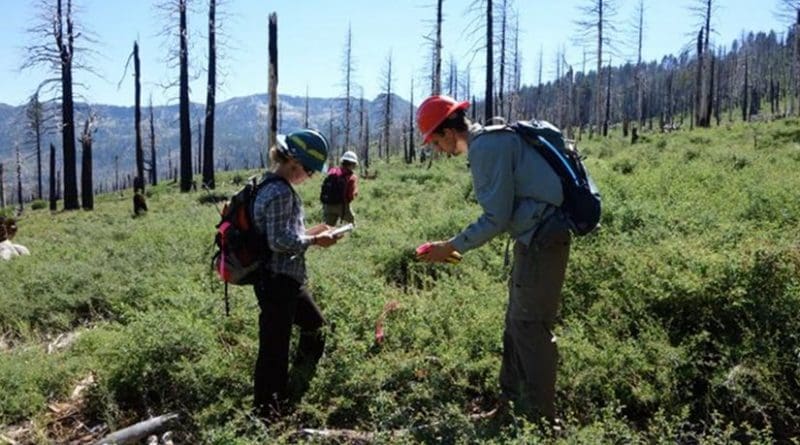As California Wildfires Burn, Southern Plant Species Shifting Northward
As California wildfires burn tree canopies and the forest floors they support, the plants that are replacing the understory are increasingly those found in more southern areas of the West, according to a study from the University of California, Davis.
“The plants we’re finding underneath our forests are becoming more like those seen in Mexico and Southern California,” said lead author Jens Stevens, a postdoctoral scholar with the UC Davis John Muir Institute of the Environment. “Under climate change, we’re seeing species from drier, warmer areas increasingly taking over. It’s a long process, but forest disturbance, be it thinning or wildfire, has the potential to hasten those shifts.”
For example, a forest floor strewn with lupine and violets–typically found in places like Northern California and Canada–may be replaced with flowers and shrubs more often seen in drier southern climates, such as manzanita and monkey flower.
However, pockets of cooler microclimates remain in forests that were thinned before a wildfire occurred. These forests burned less hot and therefore left some tree canopy, allowing for both northern and southern plant species to coexist.
“A balance of open, intermediate and closed canopy across the landscape is good,” Stevens said. “If you can increase microclimates, you can increase diversity.”

